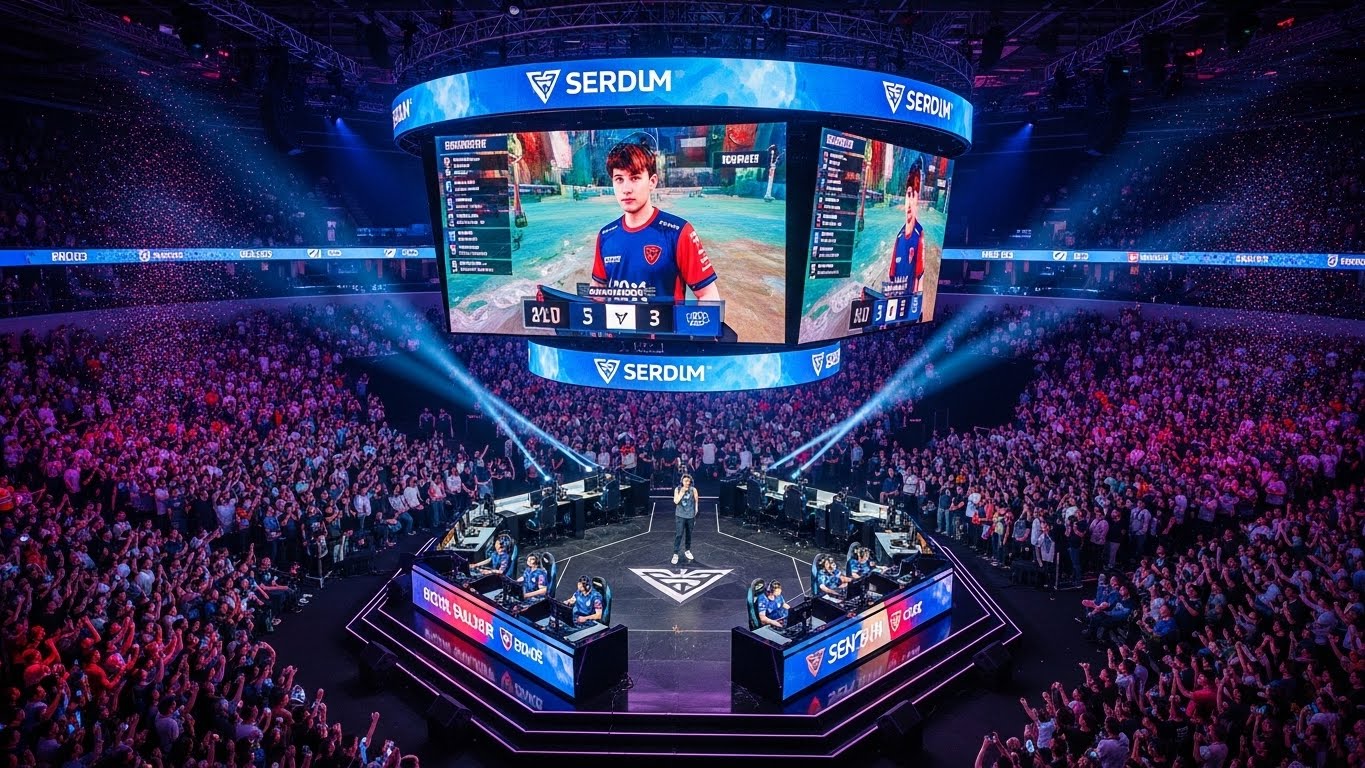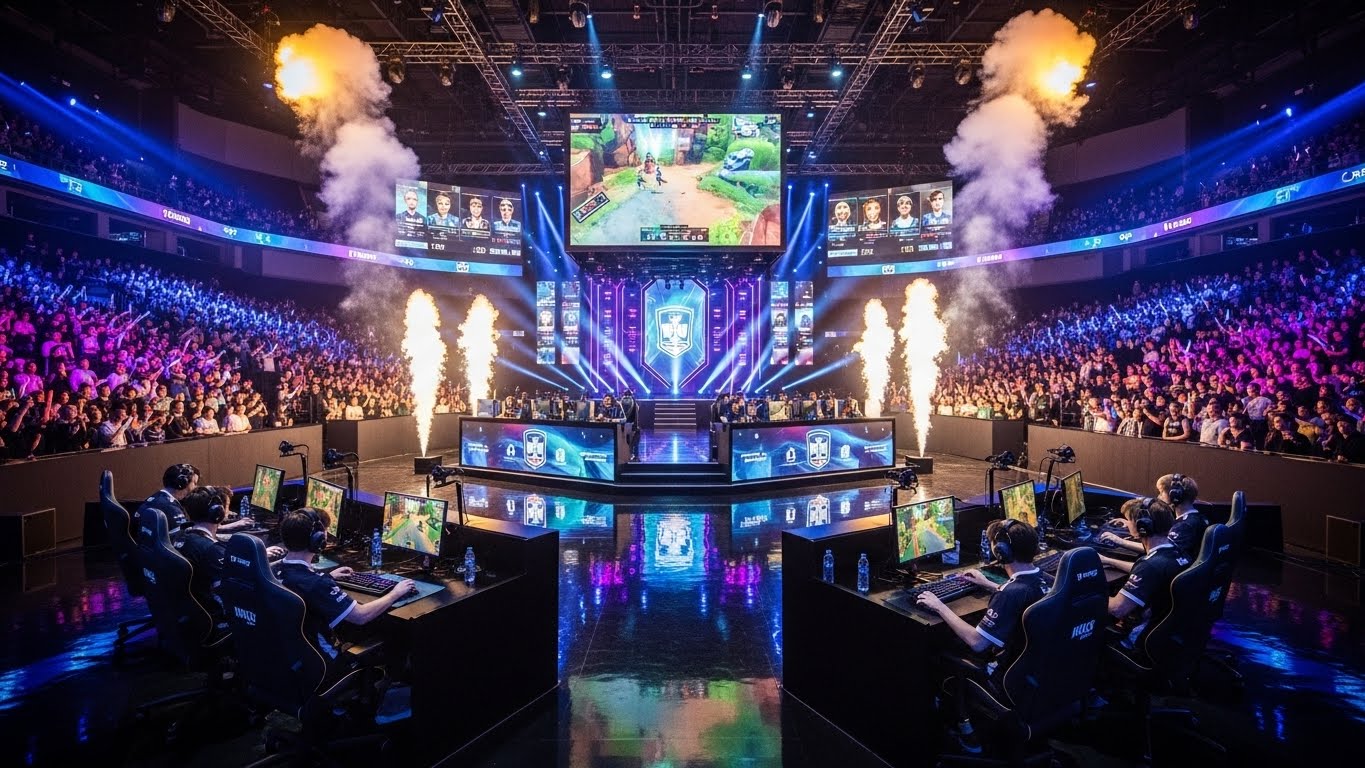Introduction
In the past few decades, the world has witnessed a tremendous transformation in how entertainment, competition, and technology converge. One of the most remarkable evolutions in this landscape is the birth and rapid growth of Esports. What once began as small-scale gaming competitions in local arcades and college dorms has evolved into a multibillion-dollar global phenomenon. Esports, short for electronic sports, represents the competitive world of organized video gaming where players and teams compete in various games, often for massive cash prizes and international recognition.
Unlike traditional sports that rely on physical athleticism, Esports depend on mental agility, strategy, teamwork, and lightning-fast reflexes. Yet, the excitement, fan engagement, and emotional investment are just as intense. Esports have become a cultural movement, reshaping perceptions of gaming and redefining what it means to be an athlete in the digital age.
The Origins of Esports
To understand the present success of Esports, it is essential to explore its roots. The earliest known gaming competition took place in 1972 at Stanford University, where students competed in the game “Spacewar.” The prize was a year’s subscription to Rolling Stone magazine, but the event’s true significance lay in its demonstration that competitive gaming could attract attention.
The 1980s saw a rise in arcade gaming culture. Titles like Pac-Man, Donkey Kong, and Space Invaders inspired players to chase high scores. In 1981, the Space Invaders Championship attracted more than 10,000 participants, marking one of the first major Esports tournaments. This era also saw the establishment of gaming records through organizations like Twin Galaxies, which helped document the best players in the world.
With the arrival of home consoles in the 1990s, Esports began to grow in new directions. Nintendo hosted gaming tournaments, and competitive titles such as Street Fighter II and StarCraft started building loyal competitive communities. The late 1990s were pivotal, as online multiplayer technology allowed players across the world to connect and compete in real time.
The Internet Revolution and Online Gaming
The late 1990s and early 2000s introduced broadband internet to homes, changing the gaming industry forever. Titles like Counter-Strike, Warcraft III, Quake III Arena, and StarCraft: Brood War became pioneers in the online competitive gaming scene. South Korea, in particular, played a defining role in shaping Esports into what it is today.
During this time, professional gamers in South Korea became celebrities, with dedicated television channels broadcasting matches to millions of viewers. Internet cafés known as “PC bangs” became cultural hubs for gamers, and Esports began to emerge as a respected career path. Other countries followed suit, as the popularity of online gaming spread rapidly across Asia, Europe, and North America.
The internet not only made gaming more accessible but also allowed fans to connect with players, join forums, watch replays, and even organize tournaments. This interactivity was something traditional sports could not easily replicate, and it became a cornerstone of Esports’ unique appeal.
The Role of Streaming and Content Creation
If the internet gave Esports its foundation, streaming platforms gave it a global stage. The early 2010s marked the rise of platforms like Twitch, YouTube Gaming, and later, Facebook Gaming. These services allowed anyone to watch live tournaments, follow their favorite players, and engage in real time with chat communities.
Streaming transformed Esports from a niche activity into a spectator sport. Viewers no longer needed to buy tickets to arenas or wait for television coverage. Instead, they could tune in instantly from their devices, making Esports accessible to millions worldwide. Top streamers and professional players gained celebrity-like status, earning sponsorships, brand deals, and fan followings that rivaled traditional athletes.
The combination of live streaming, social media, and competitive gaming created an entirely new entertainment ecosystem. Esports was no longer confined to competitions—it became part of global pop culture.
Major Esports Titles That Defined the Industry
Esports is not limited to one genre or platform. Over time, certain games have become synonymous with the industry’s rise and continue to dominate viewership and competitive play.
- League of Legends (LoL) – Developed by Riot Games, LoL became one of the most popular Esports titles in history. Its annual World Championship draws millions of viewers globally and offers multi-million-dollar prize pools.
- Dota 2 – Known for its complex mechanics and massive tournaments like The International, Dota 2 set records for Esports prize money, with single events exceeding $40 million in total winnings.
- Counter-Strike: Global Offensive (CS:GO) – A staple of first-person shooter competitions, CS:GO has one of the longest-running professional scenes, known for its tactical depth and dedicated fanbase.
- Fortnite – Combining battle royale gameplay with creative building mechanics, Fortnite attracted younger audiences and hosted major events like the Fortnite World Cup, where teenagers won millions.
- Overwatch, Valorant, and Call of Duty – These games further diversified the Esports ecosystem, offering team-based competition across different styles of gameplay.
Each title has its own professional leagues, communities, and heroes. These games not only provide thrilling competition but also push the limits of technology and creativity in gaming.
The Business of Esports
Esports has grown into a multi-billion-dollar industry, with revenue streams from sponsorships, media rights, ticket sales, merchandise, and in-game purchases. Major brands such as Coca-Cola, Intel, and Red Bull sponsor teams and tournaments, recognizing the potential to reach younger, tech-savvy audiences.
Organizations like Cloud9, Team Liquid, Fnatic, and T1 operate much like traditional sports franchises. They sign players, manage rosters, build fan engagement strategies, and sell branded merchandise. Esports events now fill arenas such as the Staples Center and Madison Square Garden, drawing thousands of live spectators and millions online.
Investment from venture capitalists and celebrities has further legitimized Esports. Figures from traditional sports, including basketball stars and football clubs, have invested in or founded Esports teams. This blending of industries highlights how gaming has become an integral part of mainstream entertainment.
Esports as a Career
In the early days, becoming a professional gamer was seen as unrealistic or impractical. Today, Esports offers numerous career opportunities beyond playing competitively. Players can become streamers, coaches, analysts, commentators, event organizers, or content creators. Educational institutions now offer Esports management and game design programs, recognizing its economic and cultural importance.
However, professional gaming demands discipline and hard work. Players often train for 8–12 hours a day, studying opponents, refining mechanics, and practicing teamwork. Physical and mental fitness also play vital roles, as reflexes, focus, and emotional control are crucial for success.
The average career span of a professional player is relatively short, often under a decade, due to the intense competition and rapid pace of technological change. Still, many players transition into other roles within the industry, ensuring their skills remain valuable long after retirement.
The Global Esports Community
One of Esports’ greatest strengths lies in its global nature. Unlike many traditional sports limited by geography, Esports connects people across borders, languages, and cultures. Fans from Asia, Europe, the Americas, and Africa unite in cheering for their favorite teams and players.
Global tournaments like The International, Worlds, and CS:GO Majors attract viewership that rivals traditional sporting events. Esports has even been included as a demonstration sport in multi-national competitions like the Asian Games, hinting at a future where it could become a permanent fixture in global athletic events.
The Esports community thrives on inclusivity and innovation. Online platforms enable fans to interact directly with professionals, participate in fan tournaments, and even influence the direction of the games themselves through feedback and engagement.
Challenges and Controversies
Despite its success, Esports faces several challenges. One major issue is player burnout. The pressure to perform at a high level, combined with long training hours, can take a toll on players’ physical and mental health. Some organizations are now implementing better wellness programs and support systems.
Another concern is the lack of regulation. Unlike traditional sports governed by established bodies, Esports operates across multiple games and publishers, each with its own rules. Issues like match-fixing, cheating, and performance-enhancing software remain threats to integrity.
Furthermore, gender inequality persists within the Esports scene. While there are notable female players and teams, the industry still struggles with inclusivity and representation. Efforts to promote diversity and create safer, more supportive environments for all participants are growing but must continue to expand.
The Role of Technology and Innovation
Technology continues to push Esports forward. High-speed internet, advanced gaming PCs, and next-generation consoles enable seamless competition and stunning visuals. Virtual reality (VR) and augmented reality (AR) are beginning to enter the Esports space, promising immersive experiences that could redefine how audiences engage with games.
Artificial intelligence is also transforming training and strategy. Teams use AI-driven analytics to study gameplay, predict opponents’ moves, and identify weaknesses. Meanwhile, cloud gaming platforms are breaking hardware barriers, making Esports more accessible to players who lack high-end equipment.
As 5G networks expand globally, latency and lag will diminish, allowing even more responsive and global competition. The integration of blockchain technology may also bring new models of player compensation and digital ownership in Esports.
Esports and Education
Educational institutions have begun to embrace Esports as both an extracurricular activity and an academic discipline. Schools and universities around the world have established Esports programs, offering scholarships to talented players and building arenas for intercollegiate competition.
Beyond gameplay, these programs teach students about marketing, event management, broadcasting, and game design—skills relevant to the broader digital economy. Esports fosters teamwork, communication, and leadership, much like traditional sports.
This educational integration is helping to legitimize gaming as a viable path for young people, dispelling outdated stereotypes that view video games as a distraction rather than an opportunity.
The Cultural Impact of Esports
Esports has influenced more than just the gaming industry—it has shaped global culture. The rise of gaming content creators, digital influencers, and gaming-inspired fashion lines shows how deeply Esports has penetrated mainstream society.
Esports athletes appear on magazine covers, participate in talk shows, and even inspire documentaries and films. Gaming music, art, and memes dominate online spaces, creating a shared digital culture that transcends boundaries.
Moreover, Esports encourages social interaction and creativity. Players collaborate across continents, forming friendships and communities that would be impossible without the digital age.
The Future of Esports
The future of Esports looks brighter than ever. Analysts predict the global Esports audience will surpass 700 million in the coming years, and revenues will continue to rise. Traditional broadcasters and streaming services are investing heavily in Esports coverage, and governments in several countries are recognizing professional gamers as legitimate athletes.
Virtual arenas, advanced analytics, and interactive fan experiences will continue to elevate the Esports viewing experience. With the continued convergence of gaming, technology, and entertainment, Esports is set to become one of the dominant industries of the 21st century.
Conclusion
Esports is more than just a trend—it is a revolution in how people compete, connect, and create. What began as casual video game contests has become a professional, global ecosystem with its own heroes, stories, and legacies. The combination of skill, technology, and passion has turned Esports into a cultural and economic powerhouse that rivals traditional sports in excitement and influence.
As technology continues to evolve and society becomes increasingly digital, Esports will remain at the forefront of innovation, bridging generations and redefining what it means to play, watch, and win in the modern world.



